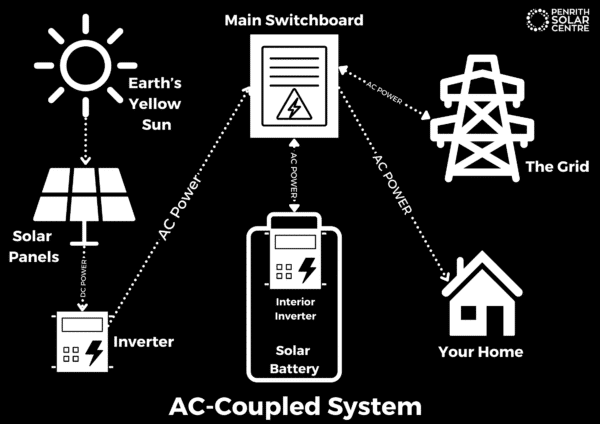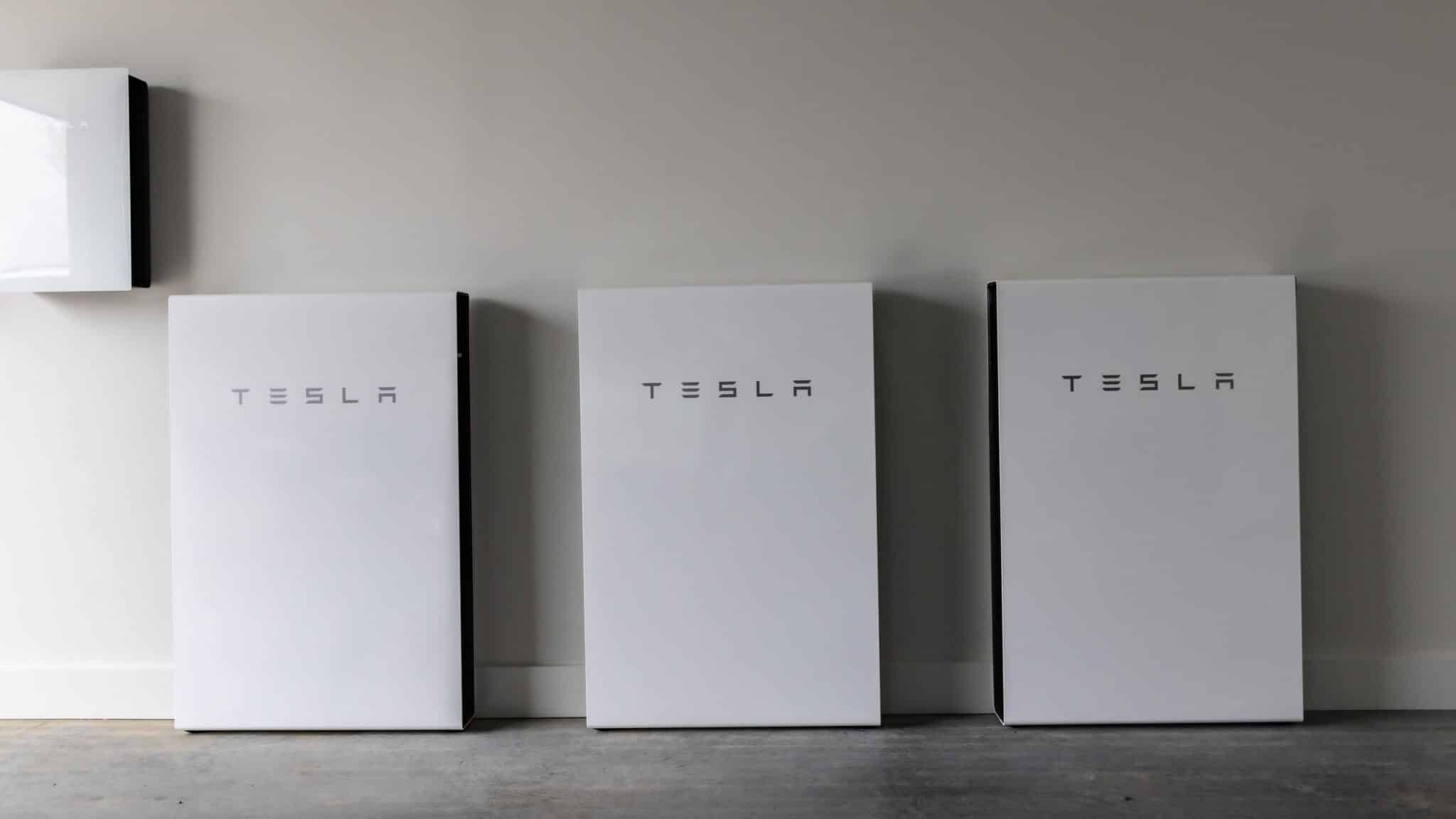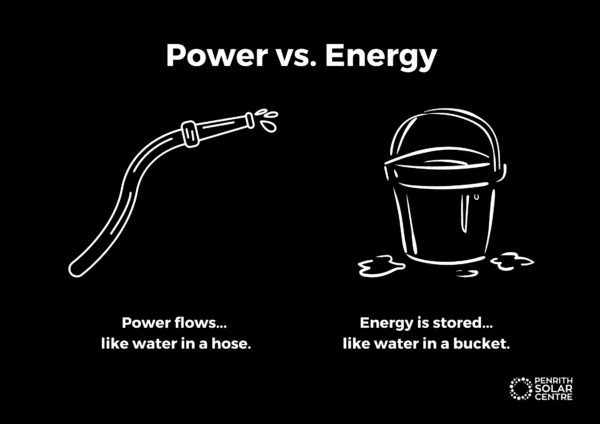
Are you researching energy solutions for a new or existing solar system?
Many new solar systems are being installed with a battery. Homeowners are also adding solar batteries to existing solar systems in steadily increasing numbers and saving money on their energy bills.
At Penrith Solar Centre, we only install two models of solar batteries: the Enphase IQ Battery 5P and the Tesla Powerwall 2. We believe that these two batteries offer the most bang for your buck to customers when it comes to features and affordability. But we want you to choose the battery that’s best for you, which is why this article is going to be an honest discussion comparing the two solar energy solutions.
This… electrifying (sorry, not sorry) showdown will answer all your burning questions about the two products.
In this article, you’ll learn:
- What is the Enphase IQ Battery 5P?
- What Are the Pros and Cons of the Enphase IQ Battery 5P?
- What is the Tesla Powerwall 2?
- What Are the Pros and Cons of the Tesla Powerwall 2?
Then we’re going to compare the following between them:
- Cost
- Power Rating
- Energy Capacity
- Reliability
- Safety
- Compatibility and Scalability
- Monitoring and Management
- Size
By the end of this article, you’ll be either Team Enphase or Team Tesla. So grab your sunnies because this is one competition where the sparks are sure to fly!
What Is the Enphase IQ Battery 5P?
Enphase Energy, an American company known for its microinverter technology, introduced the Enphase IQ Battery 5P in North America a few years ago, and now it’s available in Australia. This battery is an all-in-one AC-coupled unit that uses microinverter technology inside to make it efficient.
The Enphase IQ Battery 5P is an AC-coupled battery (spoiler alert: so is the Tesla Powerwall 2). In an AC-coupled battery solar system, the electricity generated by the solar panels changes from DC power to AC power using a microinverter attached to the back of each solar panel.
The AC power is then sent to the AC-coupled battery, where it’s converted back to DC electricity for storage until later use. When needed, the AC-coupled battery changes this stored energy back to AC power to supply electricity to the house or feed it into the grid.

That’s a lot of electricity converted from AC to DC and back to AC again. There’s a slight loss of electricity every time there’s a conversion from AC to DC power. This loss is measured by a statistic called round-trip efficiency.
To put round-trip efficiency in simple terms: if you charge a battery with 100 units of energy and can get 90 units back when you use it, the round-trip efficiency is 90%. The 10 units that are not retrievable were lost as heat or due to the battery management system operating losses during charging and discharging. The round-trip efficiency of the IQ Battery is around 96%.

Enphase’s battery is unique compared to all batteries on the market because it contains six 680 W microinverters inside, making it charge and discharge faster than other batteries. Charge and discharge rates measure how quickly power goes into or out of the battery.
The battery’s microinverters are IQ8D-BAT microinverters. The distributed architecture works in this way: if one of the six encased microinverters stops working, you’ll still have over 83.3% of your total battery charge and discharge capacity until it gets fixed under warranty. These microinverters work to ensure your power supply remains stable even if one of them has a hiccup.
If you’re interested in learning a bit more about the Enphase IQ Battery 5P, you might want to check out the following article titled, Enphase IQ Battery 5P Review.
What Are the Pros and Cons of the Enphase IQ Battery 5P?
Like anything else you might shop for, the Enphase IQ Battery 5P has its moments in the sun and moments in the shadows. Here are a few pros and cons…
Pros:
- Passive cooling with no fans. A very quiet piece of technology.
- The encased microinverters are easy to install and replace with a plug-and-play design.
- The Enphase Enlighten App is fantastic, offering a backup mode and self-consumption monitoring.
- It’s a stackable battery, which means you can link two or more together to increase your storage capacity in increments of 5kWh.
- Black start capability: if the grid is down and your battery is fully depleted (including backup stored energy), it will kick start on again in the morning once the sun is up and the solar panels are operating again.
- The warranty is the best of any battery in solar. It covers 15 years or 6,000 cycles, whichever comes first.
Cons:
- With only 5 kWh of energy storage, it’s limited in how much electricity it can hold in reserve. That being said, when doubled, two batteries cost and are about as efficient as any other battery in its class.
- It’s only compatible with Enphase solar systems and Enphase microinverters.
- There is no backward compatibility with other Enphase battery models, so it’s not stackable within its own brand. But those batteries were never sold in Australia, so it’s really not a big loss for consumers.
- It needs to be connected to the internet at all times, but it has an included sim card inside of it to make sure it is.
If you’re interested in learning a bit more about the Enphase IQ Battery 5P, you might want to check out the following article titled, How Much Does an Enphase IQ Battery 5P Cost?
Click here for solar solutions
What is the Tesla Powerwall 2?
Tesla Energy, an American corporation known for its work in electric vehicle research and production, redirected its primary efforts toward the creation of sustainable energy solutions in 2015 with the release of the Powerwall 1. The Powerwall 2 came out a year later and since then, it has undergone a series of refinements and enhancements over the past six years as the product was fine-tuned.
As we mentioned above, the Powerwall is an AC-coupled battery. One of the reasons it’s so popular is that it’s compatible with any solar system. Like the Enphase battery, the conversion from AC to DC power is done in the battery by the inverter. Where Enphase has six microinverters, Tesla only has one inverter doing the job.
An additional component that is required for the Powerwall to function is the Tesla Gateway. It’s the brains of the Powerwall, monitoring how power moves between the battery, the grid, and the switchboard.
Electricity naturally seeks the easiest route to travel, much like the flow of water. The Gateway diverts the electrical supply coming and going, depending on whether the power is flowing from your solar panels, the grid, or the battery.
If you’re interested in learning a bit more about the Tesla Powerwall 2, you might want to check out the following article titled, Tesla Powerwall 2 Review.
What Are the Pros and Cons of the Tesla Powerwall 2?

The Powerwall has its perks and pitfalls. Here are some pros and cons to consider…
Pros:
- It is compatible with literally every solar system in the world, whether a system has a string inverter or microinverters.
- Its storage capacity is 13.5 kWh, which is sizeable.
- The Powerwall is stackable and can be connected to other Powerwalls to double, triple, and maximise your storage capacity with up to ten batteries per Gateway.
- It’s the only residential battery in Australia that’s liquid-cooled, keeping it at an optimum operating temperature of 25°C.
- The Tesla monitoring app is intuitive and easy to use.
- The warranty covers ten years with an unlimited number of cycles and a maximum degradation of 70%.
Cons:
- Unlike Enphase, the Powerwall only has one internal inverter converting all coming and going electricity from AC to DC to AC again. The bad news is that if that inverter fails, the battery needs to be replaced. It’s a single point of failure and it cannot be fixed if it were to fail.
- The lack of black start capability is disappointing because the storage capacity is so large. While large energy storage is preferred for off-grid solar systems, it’s a bad choice for these solar systems because of this.
If you’re interested in learning a bit more about Powerwall and how much it costs, you might want to check out the following article titled, How Much Does a Tesla Powerwall 2 Cost?
discover your solar potential now
Which is Better for You: Enphase or Tesla?
Here’s an easily digestible chart with some notes breaking each category down. This table is designed to give you a quick glimpse into the strengths and weaknesses of each piece of technology and which is a better solution for the specific criteria.
In order to make it a fair fight, we’re going to include statistics for a stacked Enphase battery. It’ll even the odds a bit and prove for a better comparison.
Without further ado:

Cost: The cost of a solar battery is tricky to nail down sometimes. The installer, more than anything else, and the cost of that labour is what impacts the final cost the most. There are other factors that affect this as well; the size of the solar system and any additional components that are required for installation.
Tesla Powerwall 2 is the more expensive battery, but it also ranges because of labour and an additional component called the Tesla Gateway that the battery will not work without. The Powerwall by itself is $12,100 as displayed on the Tesla website, but once you factor in the labour, the cost increases.

Power Rating: It’s easy to draw a parallel between the behaviour of electricity and water. Power is electricity in motion through cabling or appliances, much like water rushing through a hose. It’s measured in kilowatts (kW).
In the above table, there are two power ratings: continuous and peak. Continuous power is the amount of electricity discharged for a steady, prolonged period. It rates how long the power can be discharged uninterrupted. The continuous power rating for Enphase is 3.84kW, and the continuous power rating for the Powerwall is 5kW.
Peak power, on the other hand, is an electrical sprint. It rates the amount of power the battery can discharge for a limited period, usually about ten seconds. For Enphase, the peak power discharge time is 7.68kW for 3 seconds and 6.14kW for 10 seconds. For the Powerwall, the peak power discharge time is 7kW for 10 seconds.

Energy Capacity: To continue our water-is-like-electricity metaphor; when you think of energy capacity, think of it behaving like water in a bucket. It’s storage. The Powerwall is the winner when it comes to energy capacity when compared to two IQ Batteries. It’s 13.4kWh opposed to 10kWh.
Safety: The chemistry of each battery is what we’ve used to determine the safety of each brand. Both Enphase and Tesla are grouped into a type of battery called lithium-ion. They do vary slightly though. Enphase is made up of lithium iron phosphate, which is cobalt-free. Being cobalt-free is more environmentally friendly and the battery can operate safely at higher temperatures, reducing the risk of fire. The Powerwall is lithium NMC (Nickel-Manganese-Cobalt), which is reasonably safe as long as the durable casing remains intact. It’s not as environmentally friendly, because it’s made with cobalt.
Compatibility: Unfortunately, the Enphase battery is only compatible with Enphase microinverter solar systems and other Enphase IQ Battery 5P’s. Powerwall on the other hand is compatible with any type of solar system, even if there are multiple inverters.
Scalability: One of the advantages of an Enphase battery is how stacking 5 kWh batteries together can help you zero-in on more specific energy storage needs. For example, you might need 15 kWh for your home based on your consumption patterns. You can meet that need with three Enphase batteries, whereas with a Powerwall, you would need to stack two of them together for too much storage of 27 kWh.
Monitoring and Management: Both batteries have similar monitoring and management systems. Which one you prefer really depends on personal user preferences. However, it should be noted that the Tesla App can only be accessed on an Apple or Android device, there is no browser support.

Size: The Powerwall is massive compared to the Enphase IQ. It weighs nearly twice as much and takes up more room wherever it’s installed. The footprint of the Enphase battery is smaller, but there are two of them and their footprint doubles in comparison to Powerwall.
If you’re interested in learning a bit more about how to monitor and manage your energy with a battery, we recommend you check out the following article titled, What is Consumption Monitoring?
Enphase IQ Battery 5P vs. Tesla Powerwall 2: Which is Right for You?
Both the Enphase and Tesla batteries are wonderful products. The choice between the two of them includes considerations of cost, performance, and compatibility. There are a few differences between them. Powerwall is cheaper per kWh and has a more compatible battery while Enphase has the decentralised architecture of six microinverters that make it more reliable.
Which one is better? Well, it depends. Your specific energy storage needs are unique to you. There’s no simple answer. Every home or business investigating solar batteries has different goals and budgets.
You should have a better understanding of each option now. With the power of knowledge, you’re sure to make a more informed choice as an enlightened shopper.

If you’d like to learn more about whether a Tesla Powerwall 2 or Enphase IQ Battery 5P is the best solution for your solar system, new or existing, please give us a call, stop by our showroom, or fill out a request for a quote. We’re here to help!










